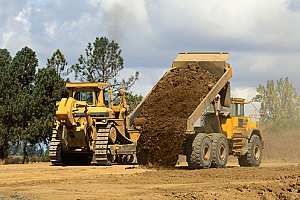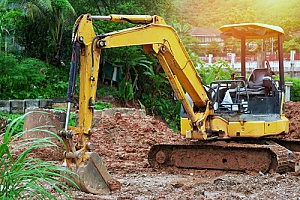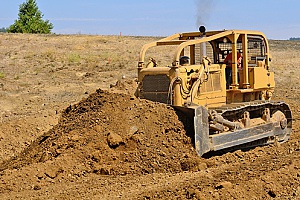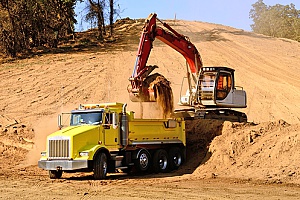When it comes to construction and landscaping projects, choosing the right type of fill dirt is crucial for ensuring stability, proper drainage, and the overall success of your endeavor. Fill dirt, though often overlooked, plays a vital role in creating strong foundations and providing support for various structures. In this blog, we’ll dive into the world of fill dirt and explore the different types available near you, helping you make informed decisions for your upcoming projects.
Understanding Fill Dirt
 Fill dirt, simply put, is the soil used to fill in depressions, level surfaces, and create foundations for construction. Unlike topsoil, fill dirt isn’t rich in nutrients and is primarily used for structural purposes. It’s imperative to understand that proper compaction and drainage are key factors in achieving a stable and durable result.
Fill dirt, simply put, is the soil used to fill in depressions, level surfaces, and create foundations for construction. Unlike topsoil, fill dirt isn’t rich in nutrients and is primarily used for structural purposes. It’s imperative to understand that proper compaction and drainage are key factors in achieving a stable and durable result.
Common Sources of Fill Dirt
Fill dirt can come from a range of sources, each with its own advantages and potential drawbacks. Construction sites, excavation projects, and even agricultural lands can yield fill dirt. While construction sites might provide readily available fill, there’s a need for quality control to ensure it’s free from contaminants. Excavation sites could offer a cost-effective option, but the soil’s composition might not always be ideal for your project’s needs.
Types of Fill Dirt
Clay Fill Dirt
Clay fill dirt is known for its excellent compaction properties. It retains water well, making it suitable for projects that require stable foundations and moisture control. Building sturdy structures on clay-rich soil is a smart choice due to its ability to provide strong support.
Sand Fill Dirt
Sand fill dirt offers superior drainage capabilities and is often used in areas where water retention isn’t desired. It’s excellent for improving drainage in regions with poor soil quality and is an asset when creating stable backfills.
Silt Fill Dirt
Silt fill dirt consists of fine particles and has moderate drainage properties. It’s a valuable addition to gardening and landscaping projects, as it helps enhance soil structure and water retention.
Mixed Fill Dirt
In some cases, using a blend of different soil types creates a mix that best suits your project’s requirements. This mixed fill dirt can be tailored to provide the desired characteristics, making it suitable for projects like sports fields and golf courses.
Factors Influencing Fill Dirt Choice
 Project Requirements
Project Requirements
The type of project you’re embarking on significantly influences the choice of fill dirt. Residential, commercial, and landscaping projects all have distinct needs in terms of load-bearing capacity, drainage, and structural integrity.
Soil Testing
Before selecting fill dirt, conducting soil tests is essential. Soil testing helps determine the composition, drainage capabilities, and potential contaminants in the soil. It’s a critical step in choosing the right type of fill dirt for your project.
Challenges and Considerations
Environmental Impact
While fill dirt is necessary for construction, being mindful of its environmental impact is crucial. Responsible sourcing and proper disposal practices are essential to minimize ecological harm.
Contaminants and Quality Control
Contaminants in fill dirt can pose risks to both the project’s success and the environment. Ensuring quality control and adhering to regulations will help mitigate these risks.
Finding Fill Dirt Near You
 Local Suppliers
Local Suppliers
Researching and connecting with local suppliers of fill dirt is the first step in acquiring the right soil for your project. Look for suppliers with a reputable track record and positive customer reviews.
Pricing and Delivery
Factors like the type of fill dirt, quantity needed, and delivery distance affect the overall cost. Request accurate pricing quotes and discuss delivery logistics with suppliers.
Reach Out the the Northern Virginia Fill Dirt Experts
 Selecting the appropriate fill dirt for your construction and landscaping projects can greatly impact their success. By understanding the different types of fill dirt available near you, considering project requirements, conducting soil testing, and factoring in environmental and regulatory considerations, you can make well-informed decisions that contribute to the longevity and stability of your endeavors.
Selecting the appropriate fill dirt for your construction and landscaping projects can greatly impact their success. By understanding the different types of fill dirt available near you, considering project requirements, conducting soil testing, and factoring in environmental and regulatory considerations, you can make well-informed decisions that contribute to the longevity and stability of your endeavors.
Obtaining quality fill dirt doesn’t have to be a chore. Dirt Connections proudly supplies quality soils and materials to homes and construction sites, and free of charge for 10 or more truckloads. Contact Dirt Connections today by giving us a call or sending us a message online to set up a dirt delivery or your project, or to discuss any of your grading assistance and site preparation needs.












































